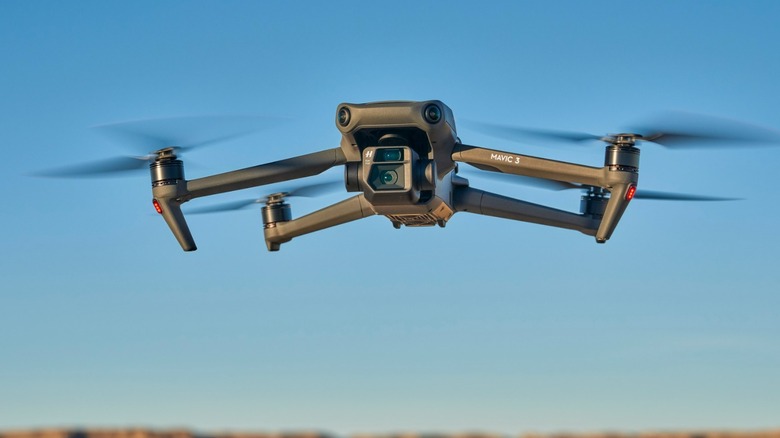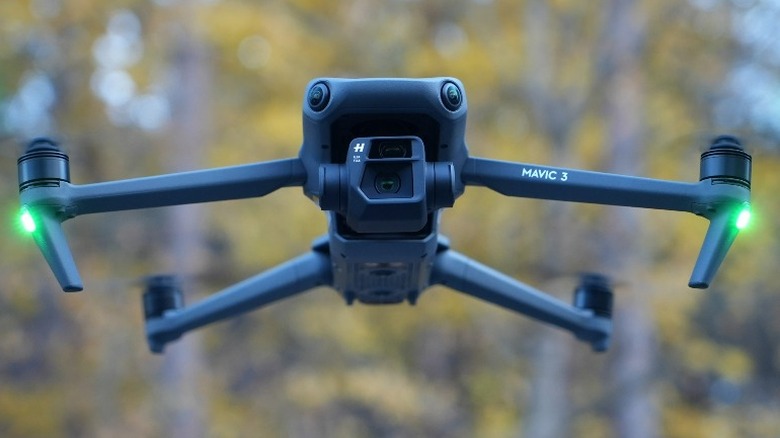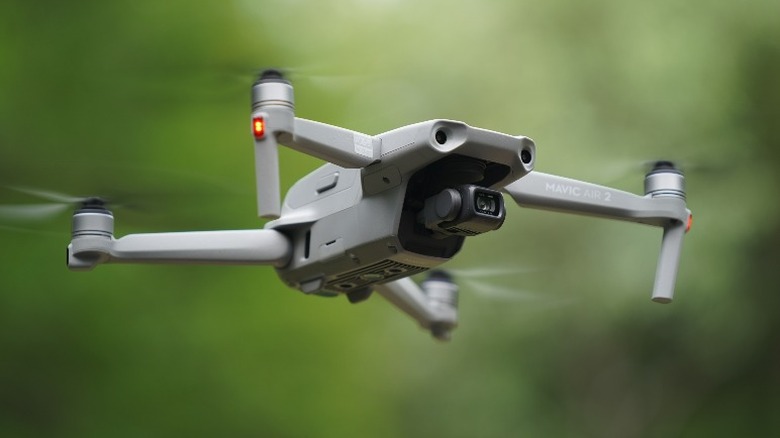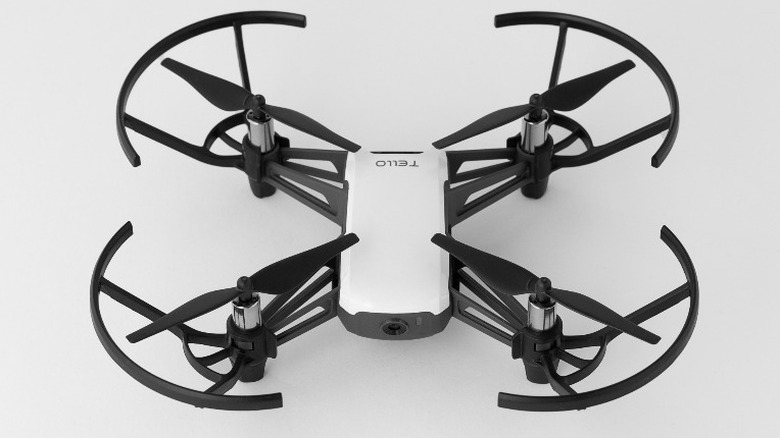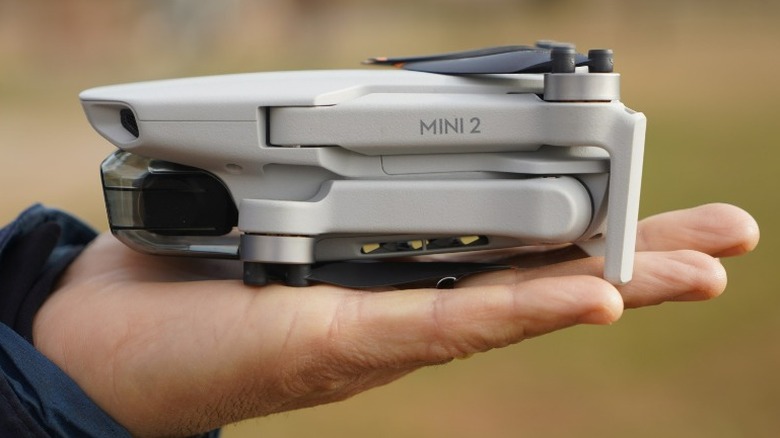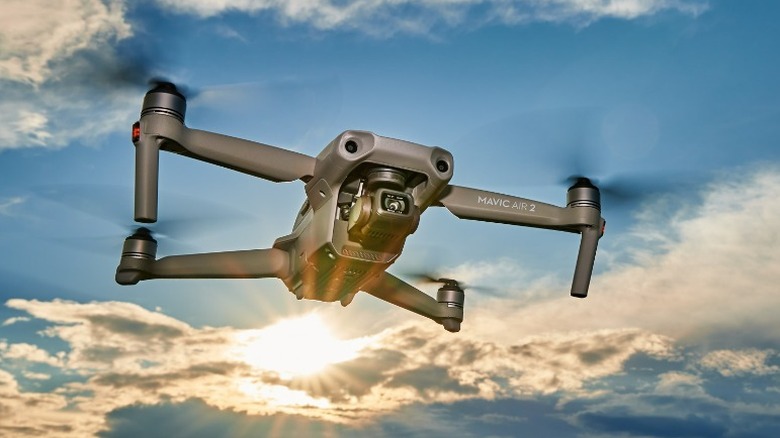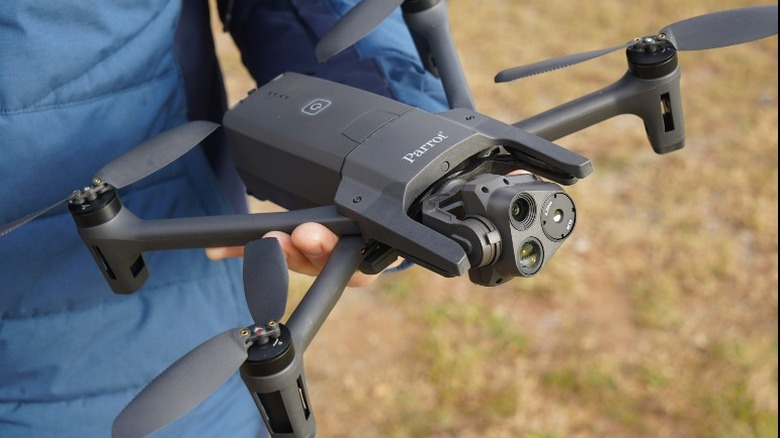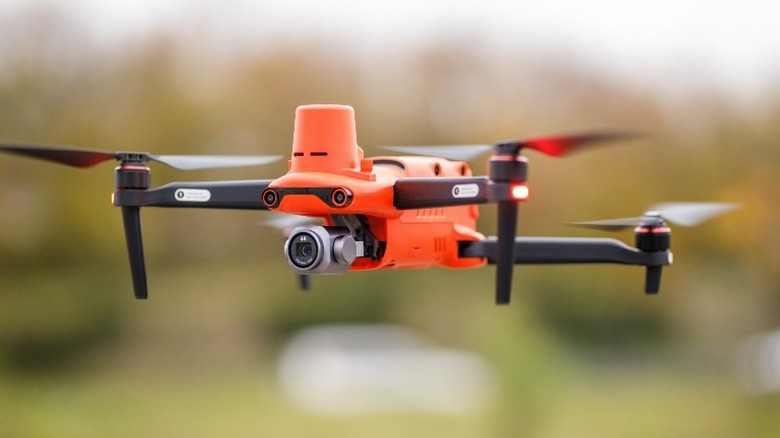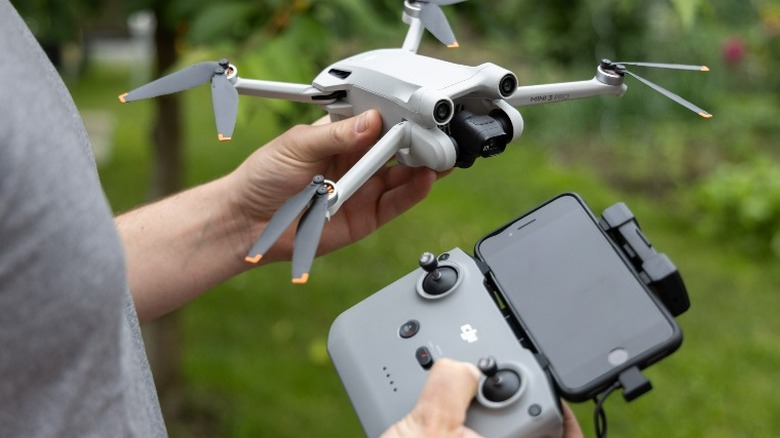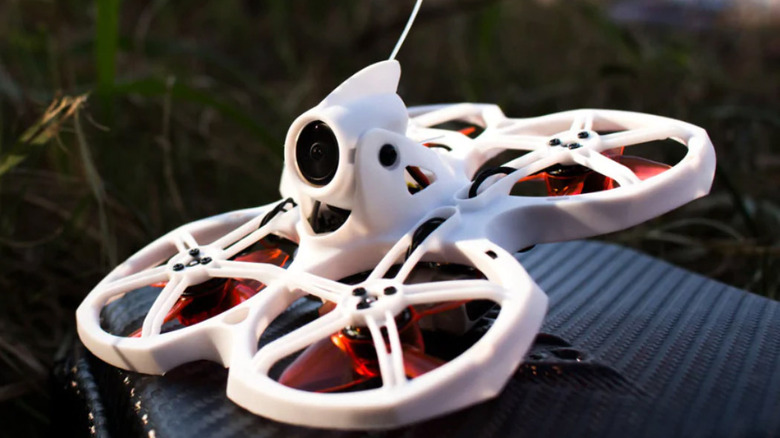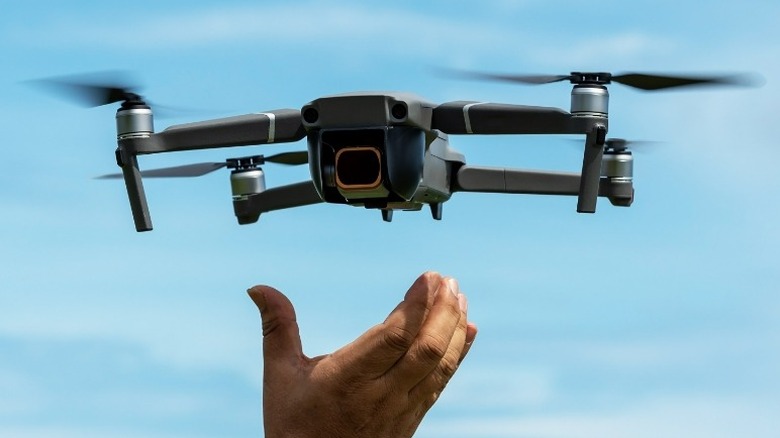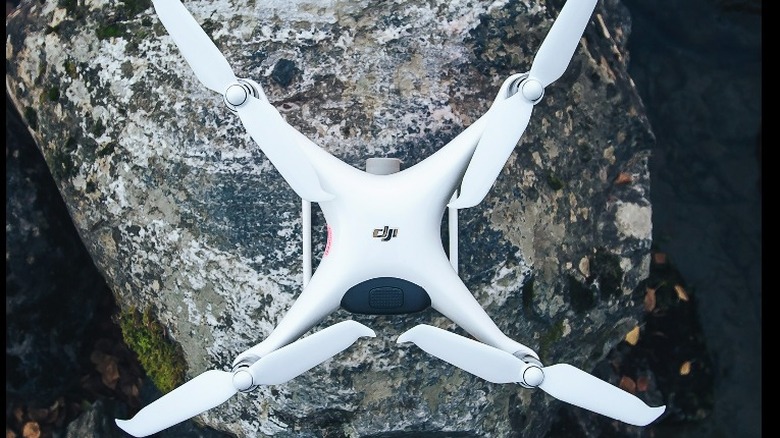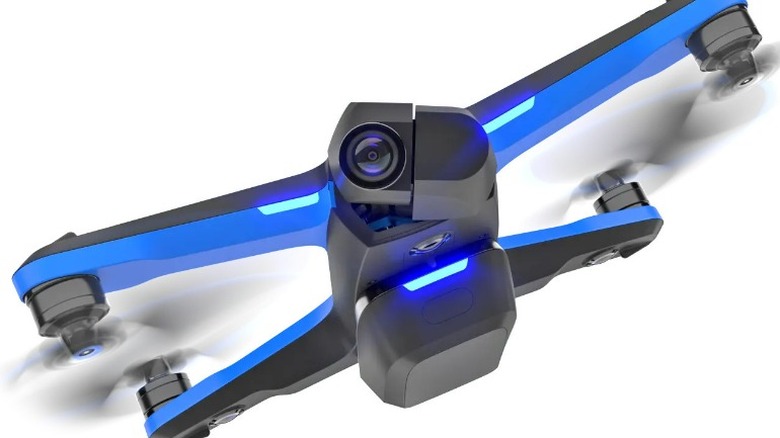The 12 Coolest Drones That Money Can Buy
We may receive a commission on purchases made from links.
The commercial use of drones has grown significantly over the past two decades, and today drone services are in high demand by professionals in a variety of industries. Quadcopters have also become popular with many hobbyists. As of May 31, 2022, the FAA had registered 314,689 commercial and 538,172 recreational drones. Many more unregistered quads are in operation.
Drones are offered with a wide range of features and prices from basic models that cost under $100 to long-range drones fitted with high-resolution still and video cameras that can cost over $3,000. The coolest drone will be the one that has features that meet your flying requirements. Novice fliers should look for drones with automated flight modes and programmable flight paths which minimize the need for advanced flying skills. The inexpensive Ryze Tello is a good choice for flyers looking to improve their skills rather than take high-quality photos and videos. If you want a drone that automatically tracks your every move without being directly controlled, select one with a "follow me" function, such as the DJI Air 2S and DJI Mavic Air 2. Photographers looking for the highest quality photos and video can expect to spend more money for a drone with excellent camera quality such as the DJI Mavic 3.
Here are 12 of the coolest drones that money can buy.
DJI Mavic 3
DJI offers the Mavic 3 in three variants: Mavic 3, Mavic 3 Classic, and Mavic 3 Cine. All three models share similar performance characteristics offering a smooth flight in a normal mode, a Sport mode at a blistering 19 m/s, and the slower Cinematic mode, ideal for videography, at 5 m/s. Each uses a 4/3 CMOS Hasselblad sensor for 20MP imaging, shoots 5.1K video at 50 fps, and features 4K video at 120 fps for remarkable slow-motion (via DJI). The camera is mounted on a 3-axis gimbal to provide unparalleled stability.
However, significant differences distinguish the three versions. The Mavic 3 Classic comes with a single 3x digital zoom Hasselblad sensor, while the Mavic 3 and Mavic 3 Cine include a telephoto lens providing up to 28x hybrid zoom. Both the Mavic 3 and Mavic 3 Cine have a gimbal lock, not implemented on the Mavic 3 Classic.
Another key difference is the use of Apple ProRes 422 HQ Codec on the Mavic 3 Cine. The video compression format is the industry standard for high-quality video and is considered among the best HD formats available for cinematography. To accommodate the large Apple ProRes files, the Cine has an internal 1TB SSD and the option for a microSD card to augment capacity.
All Mavic 3 models can stay aloft for an extraordinary 46 minutes in flight or 40 minutes while hovering. Both the Mavic 3 and Mavic 3 Cine retail for over $2,000, while the Mavic 3 Classic sells for about $1,600.
DJI Air 2S
Although it is larger and heavier than the DJI "Mini" series drones, the folding design of the Air 2S makes it easy to fit into a backpack. The combination of automated flying modes, excellent image quality, and flight time makes it a superb choice for the traveling hobbyist willing to spend about $1,000.
DJI fit the Air 2S with front, rear, bottom, and top obstacle sensors that use binocular zooming technology to recognize objects from a long distance when traveling at speed. The Advanced Pilot Assistance System (APAS) 4.0 can be set to stop the drone or to fly autonomously under, over, or around detected obstacles, and help prevent collisions. The drone also includes a mode that follows a walking drone pilot and another that automatically circles a point of interest.
Perhaps the coolest feature of the DJI Air 2S is the 20MP one-inch sensor, which provides higher image quality and an improved high ISO response compared to its sibling the Mavic Air 2. And, despite its larger size, the sensor only increases the weight of the drone over the Mavic Air 2 by a mere 25g.
The Air 2S offers significant creative potential by capturing 5.4K video at 30 fps, 4K video at 60 fps, as well as 1080p at up to 120 fps (via DJI). The digital zoom feature provides 4x with 4K video at 30 fps but increases to 8x zoom with 1080p at 30 fps allowing professional pilots to take closeups of objects and people while maintaining a safe physical distance.
Ryze Tech Tello
The Ryze Tech Tello is an ideal drone for the novice or hobbyist more interested in acquiring remote control flying skills than video capture. At the affordable price of about $100, the simple, lightweight drone is equipped with a dated 720p camera, but it produces decent videos and 5MP photos (via Ryze Robotics). Lacking a memory card slot, the Tello sends images and videos directly to your smartphone wirelessly using the Tello app for iOS and Android.
The straightforward app with the responsive on-screen twin-stick setup makes flight easy even for kids. The Tello boasts a 13-minute flight time and a rated range of 100m. The Tello also lacks GPS stabilization and therefore no automated return-to-home function. However, Tello's Vision Positioning System using downward-facing sensors keeps the drone in place, albeit with some drift, by reading the patterns of the ground below.
One of the coolest features of the Tello is support for MIT's Scratch coding platform. The affordable quadcopter is effective as a STEM tool to encourage kids to learn to program. While the small quadcopter can be flown with a controller or smartphone, it can also be connected to a laptop running Scratch. Kids can have fun while learning the basics of coding when executing commands and macros in sequence.
DJI Mini 2
The DJI Mini 2 is an excellent choice for the hobbyist and student filmmaker looking to enter the world of aerial photography with a camera resolution of 12MP, 4K video at 30 fps, and 1080P video at 60 fps (via DJI). The compact folding quadcopter weighing only 249g is easy to carry anywhere and the drone does not require registration with the FAA (USA).
The DJI Mini 2 is the most feature-rich quadcopter priced at just under $500. It has a range of 6.2 miles, and it can fly for up to 31 minutes on a single charge at a maximum speed of 35.7mph. The safety features include transceivers for both GPS and GLONASS positioning systems, which pinpoint the drone's location on a map and improve its hovering capability. GPS provides autonomous and semi-autonomous flight, and the Mini 2 comes with several preprogrammed automated Quickshots, flight paths that circle, corkscrew, or pull back and away.
DJI has kept the weight down by eliminating sensors for obstacle avoidance. The trade-off is the learning curve required to master control and some unavoidable crashes during the process. The Mini 2 uses the DJI Fly control app that includes the Find My Drone feature showing the quadcopter's last known position. No internal storage is included with the drone, but a microSDXC memory card slot allows pilots to add memory for storing videos.
DJI Mavic Air 2
The compact folding DJI Mavic Air 2 boasts a 34-minute flight time and a maximum 10km range. The drone takes 4k video at 60 fps, records in slow motion at 240 fps, and shoots 48-megapixel still photographs with a ½ -inch CMOS sensor (via DJI). The hull is made of durable acrylonitrile butadiene styrene (ABS) material, which provides some protection from crashes. DJI installed quiet brushless motors and low-noise propellers, giving the drone near-silent operation. The Mavic Air 2 weighs 590g, which means it must be registered with the FAA (via faa.gov) before it can be flown in North America.
The quadcopter offers several functions that make it easy to fly even for beginners. Obstacle sensing in three directions and the Advanced Pilot Assistance System (APAS) help the drone avoid collisions with other objects.
The drone has level 5 wind resistance, meaning it can fly successfully in a medium breeze. It operates at three speeds: a standard 12 m/s, a slow 5 m/s, and a top speed of 19 m/s (via DJI). GPS location tracking advises the pilot of the drone's location and helps it come back home if the battery loses power or the signal is lost. Headless mode keeps the drone nose facing the direction the drone is flying, while GPS altitude hold maintains it at the set altitude.
With an appealing combination of imaging, stability, and safety features, the DJI Mavic Air 2 is among the best drones you can buy for under $1,000.
Parrot Anafi
The long narrow form factor of the folding Parrot Anafi is easy to squeeze into a rucksack, and it charges with the same USB-C adapter used for a smartphone, making it an ideal drone for travel. Parrot designed the Anafi with 4K HDR video and 21MP photos (via Parrot), real gimbal stabilization, and Hyperlapse (moving time-lapse), to compete with the DJI Mavic Air which is around the same price point. However, the feature that distinguishes the Anafi from the Mavic Air and most other drones in its class is the maneuverable eyeball camera at its head. It has a 180 degrees vertical range allowing it to take shots directly upwards and the 2.8x optical zoom lens provides closeups with no image quality reduction. Although the Anafi comes with no built-in SD storage, memory can be added via a microSD card. Parrot also offers the Anafi drone in an all-in-one pack with FPV accessories and a handy backpack.
While the Parrot Anafi is an excellent choice for filmmakers, the lack of obstacle avoidance sensors makes it less appealing to the novice and better suited for experienced drone pilots. The zoom lens helps reduce the risk of crashes by providing close-up photography without flying too close to the subject. The Anafi travels at a speed of 35 mph with a maximum range of 2.5 miles.
Autel Evo Lite
The Autel Evo Lite + offers features that compete with the DJI Air 2S including a 20-megapixel one-inch CMOS sensor to shoot 5.4K footage at 30 fps (via Digital Camera World). However, the drone outdoes the DJI Air 2S and the Mavic Pro 2 with a 40-minute flight time and adjustable aperture ranging from f/2.8 to f/11 (via Autel). The stop-down aperture capability gives the drone a significant advantage by limiting the light when filming brightly lit scenes and controlling the depth of field.
The Evo Lite + offers an impressive range of 7.46 miles and the live stream feature can reach 2.7K where the signal is strong. Autel's Dynamic Track 2.1 provides automatic tracking of any vehicle, animal, or person in motion and the quadcopter will orbit stationary objects on the ground like buildings. Three-way collision sensing detects objects at about 26 feet, which helps avoid crashes and makes the drone attractive to the novice pilot.
The Sky app offers Smooth, Standard, and Ludicrous flight modes. The first two are best used for videography while the latter enables a top speed of 42 miles an hour. High speed negates the obstacle-avoidance features since pilots have little time to react to any warning.
The Autel Evo Lite + is offered in several bundles ranging in price from the Standard Bundle at $1,079 to the Premium Bundle, which includes three batteries, three prop replacements, a multi-battery charger, four UV filters, and a soft carry bag at $1,549.
DJI Mini 3 Pro
For the drone enthusiast looking to upgrade capabilities from the DJI Mini 2, the palm-sized Mini 3 Pro offers automated flight modes and stabilized 4K60 footage with digital zoom. The drone also supports vertical 9:16 video for social media videos (via DJI). The folding Mini 3 Pro is larger than DJI's earlier Minis, but it still avoids mandatory FAA registration with its weight of 249g.
DJI added several safety features to the Mini 3 Pro (via DJI). Three-way sensors point directly to the front, behind, and below for obstacle detection and avoidance. Using the Advanced Pilot Assist System 4.0 (APAS), you can decide how the system works: stop the drone in place or automatically adjust its flight path to fly around obstacles. The autopilot can navigate through complex spaces by itself when flying low to the ground. GPS/GLONASS positioning and automated return-to-home make the drone suitable for the novice pilot, and the FlySafe geofence system prevents flights in unauthorized locations.
DJI offers the Mini 3 Pro in several kits, including a version without a remote control ($669) meant for customers who already own a compatible remote (same controller as the Air 2S, Mavic Air 2, and Mini 2). The kit that includes the basic DJI remote (it uses a smartphone to see the camera view and runs the DJI Fly control app) costs $759.
Emax Tinyhawk 2
Racing drones are agile and built for speed (often more than 100 mph). They are capable of acrobatic maneuvers executed with a set of manual controls. The Tinyhawk2 is an ideal drone for enthusiasts who want to get into racing. It uses powerful brushless motors that stay cool and last longer than brushed motors, and the MPU6000 gyro provides stable flight. The quadcopter can even be flown outdoors with no wind.
The Tinyhawk 2 is built with a durable frame and weighs a mere 43.5g with a 450mAh 1S battery (via Emax). The flight time is around 6 minutes, and it has a blistering top speed of 45 mph (via extremeflyers.com). The propellers are positioned under the quad instead of above it and attach to downward-facing motors.
The Runcam Nano 2 FPV camera mounted above the propellers captures high-quality video. The video transmitter (VTX) force is 25mW (maximum allowed for racing) but can arrive at 100/200mW for a longer range and a completely clear videography experience. The VTX sends instantaneous footage right from the quadcopter's cockpit out to the EMAX Transporter 18650 FPV Goggles, included with the kit, allowing you to see what the drone sees in real-time. The Emax Tinyhawk 2 drone with battery, goggles, and controller sells for just over $250, making it the ideal drone for beginners and kids to hone their racing skills.
EXO Scout
The EXO Scout is an excellent drone for beginners offering more capabilities than the typical toy drone. The quad sets up in just minutes and is easy to control right out of the box. The Scout features auto takeoffs and landings and offers three flight speeds (7, 12, and 15 mph). Sensors help to avoid crashes, and you can set an altitude hold mid-flight.
The drone comes with a camera that shoots 6-megapixel still images and 1080p video. Using a smartphone, the camera can be tilted 90 degrees up or down remotely for a birds-eye view and produce close-ups using the 10x digital zoom feature. The Scout provides over ten smart modes such as virtual reality, pin-fly, follow-me, voice commands, and more.
The quadcopter has a limited range of just 315 feet, a characteristic that prevents it from ratings above the advanced toy category. In addition, flight time is a mere 15 minutes on a full battery charge. However, purchasing a kit with multiple batteries will eliminate wait times between charges. Despite its limitations, the EXO Scout priced under $170, offers good value for the budget-minded buyer just learning how to fly. One Amazon buyer wrote, "I have never operated a drone before, and I thought it would be difficult to learn but I was able to fly the drone straight out of the box with no hassle."
DJI Phantom 4 Pro V2.0
Although the Phantom 4 Pro V2.0 was launched back in 2018, the drone remains one of the best in its category. It offers power, responsive controls, speed, still photos, and video suitable for professional photographers and videographers. The Phantom features a large one-inch 20MP CMOS sensor with an adjustable aperture of f/2.8-f/11 for flexibility and control (via DJI). The mechanical shutter mounted on a 3-axis motorized gimbal with powered stabilization works together with the drone's software to eliminate rolling shutter distortion. The camera produces impressive raw stills and shoots 4K/60p video at 100Mbps.
At 1,375g, the Phantom requires FAA registration in the U.S., and along with 468g for each additional battery, plus the controller weighing 904g, the kit can be cumbersome to carry. The Phantom 4 Pro V2.0 offers unparalleled flight performance with 60 percent less noise than the previous model. Its automatic frequency switching, 1080p live streaming, and a maximum flight speed of 72 kph. OcuSync 2.0 technology helps provide a maximum transmission distance of 8km. While the impressive range cannot be used in areas where laws require drones to remain within 500m of the pilot and within visual line of sight, it ensures a robust signal.
DJI also adds intelligent modes such as TapFly, ActiveTrack, Draw mode, Gesture mode, and more for optimum flight performance, but the photographic capabilities make this quad an excellent choice. DJI offers the Phantom 4 Pro V2.0 in various bundles priced from $2,300 to $3,500.
Skydio 2
The Skydio 2+ is a well-built drone that emphasizes automated flight over pilot-focused operation. Pre-programmed flight patterns, independent takeoffs/landings, and hassle-free follow mode make the quad an easy-to-operate, mostly autonomous flying machine. Six navigational cameras mounted in a trinocular configuration top and bottom help the Skydio 2+ avoid obstacles at 360 degrees and power its subject tracking and "autopilot" functionality. The automated flight system uses the cameras to build a real-time 3D map of its surroundings which it uses to navigate its way through places that other drones can't manage (via Wired).
The lightweight quad weighs only 0.78 kg and flies at a maximum speed of 36 mph (via Skydio). The range is 3.7 miles and a fully charged battery gives the drone a maximum flight time of 27 minutes. The Skydio 2+ excels in intelligent flight performance with programmable flight patterns such as orbiting, cable cam flight, return home, and follow mode. The quad also includes Waypoint GPS Navigation, a system that keeps the drone stable, flies it to the configured waypoints coordinates at a designated altitude and speed, and brings it back home.
The Skydio 2+ captures sharp 12.3 megapixel still images and provides slightly better than average video performance with its maximum resolution of 4K at 60 fps and 1080p at 120 fps. However, the unmatched 360-degree obstacle avoidance capabilities make this quad unique and help justify its $2,200 price tag.
